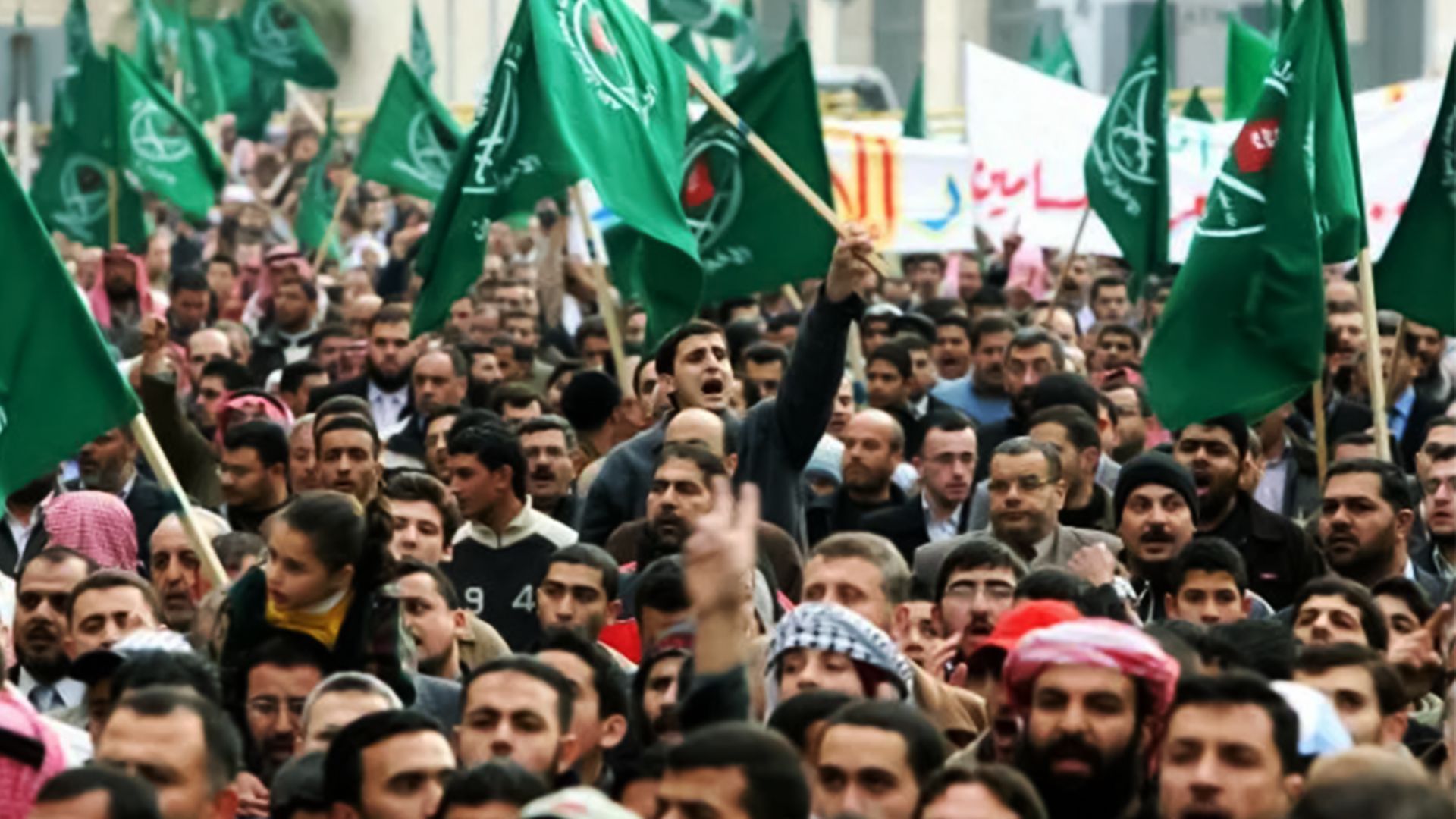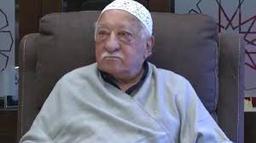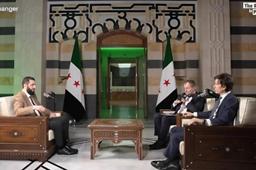
International Radicalism Observatory
 +905534025560
+905534025560 info@urad.com.tr
info@urad.com.tr 06560, Söğütözü Cad. No:43 Ankara, Turkiye
06560, Söğütözü Cad. No:43 Ankara, Turkiye
Association

Introduction
Since its foundation in 1928, the Muslim Brotherhood has been one of the most important social groups in the Middle East. Founded under the leadership of Hasan al-Banna, the group has undergone many ideological and organizational changes over the years. Initially following a passive and instructive path, the group underwent a radical change ideologically in the late 1930s, organizationally in the early 1940s, and finally in action in 1948. In the 1950s, the Muslim Brotherhood came under government pressure due to radicalization and moved to other countries to form new branches with similar principles, leadership cadres, and mechanisms. It will be examined whether the Muslim Brotherhood, which appears to be a civil society organization at first glance, has radical and paramilitary branches in this article. Accordingly, radicalism will be defined and the periodical radicalization of the organization will be analyzed.
What is Radicalism?
Although radicalism has many different types and discourses, it is academically defined as follows: opposition to hegemonic systems, individuals, and institutions within a specific context (Karell, 2019). Radicalism does not only have to take the form of armed terrorism, that is, radicalism in action. Radicalism can also be discursive (doctrinal) and organizational. A group’s rhetoric of regime/system change, its political and financial support for other radical groups, or the existence of a revolutionary army inside the group can make it radical. For example, a democratic group with a revolutionary wing opposing communism in China might be sufficient to label it as a radical group. In the following sections, mainly Islamic radicalism and jihadism will be discussed in light of the above definition.
Stages of Radicalism
Radical organizations are often radicalized not all at once, but in stages. We usually only witness radicalization in action, which is the last step. The steps of radicalization are as follows: ideological radicalization, organizational radicalization, and radicalization in action (Matesan, 2019). In fact, this process can be seen as the construction of a building. The final and visible structure, operational radicalization, can only emerge after the ideological and organizational foundations have been established. Sometimes there may be a tension between operational radicalization and the ideology of the organization. The organization may ignore or reject the action-oriented radical wing. In the case of the Muslim Brotherhood, the process is somewhat similar. Initially, the group started as a peaceful organization under the teachings of Hasan al-Banna, but later adopted an activist ideology and opposed government policy. In order to support this activist ideology, they later formed an armed mujahideen group, which they called the “secret apparatus”. As a final step, this class of mujahideen not only took the front against the Zionists in Palestine but also at some point began to engage in physical resistance and assassination attempts against government personnel. So, it seems that the activist ideology actually created the need and the basis for the mujahideen and acts of violence.
Factors That Trigger Radicalization
Although the factors that trigger radicalization vary from case to case, they can be broadly divided into two groups: internal and external factors. While disagreements and power struggles within the organization/group constitute internal factors, pressures from the government or a source of power, excessive resentment against the system (conceptual views such as Taghut, and shirk feed this resentment) and radical movements in other countries constitute external factors (Matesan, 2019). It was these two factors that led Hasan al-Banna and his successors to radicalism. Towards the end of the 1940s, increasing government pressure and the shrinking space for peaceful opposition pushed Benna to take more radical decisions. During World War II, the pressure and occasional arrests of the group by the British administration increased the group’s distrust of the government (Mitchell, 1993). As a result of this distrust, the group, which was already anti-imperialist, formed a more active ideology and organization. The Mujahideen branch was established in 1942, a period of increased government pressure. Hasan al-Banna's initial arrest, followed by his assassination, brought about insecurity within the group. In retaliation, the Mujahideen began to assassinate prosecutors and government personnel. These government pressures, mutual conflicts, and events in Palestine can be labeled as external factors.
Some members of the group, finding Hasan al-Banna’s ideology too passive, became radicalized by adopting a more extreme takfirist interpretation. One of these figures was Salih al-Ashwami, who also recruited Sayyid Qutb to the organization (Mitchell, 1993). This emerging power struggle pushed al-Ashwami to expand the activities of the mujahideen wing (Mitchell, 1993). Al-Hudeybi, who was elected as the head of the group after Banna’s assassination, was also found ineffective, and with the power vacuum created by Banna’s death, the mujahideen wing took the reins and became more radicalized. Increasing repression, narrowing peaceful avenues, and the power struggle within the group pushed the radical members to attempt the assassination of Gamal Abdel Nasser, the Egyptian prime minister of the time, in 1954.
Radicalization Trends
Another reason for a group to engage in radical activities is the radicalization of other groups, in other words, the formation of a radical circle. In fact, Banna’s secretly smuggling weapons into the organization and establishing connections with the military cadres who opposed the government of the period, at a time when the Muslim Brotherhood was not suppressed by either internal or external factors, can only be associated with the radicalization movements of other groups (Mitchell, 1993) (Matesan, 2019).
Radicalism and Violence in the Muslim Brotherhood
In fact, it can be said that the Muslim Brotherhood has been a fierce opposition group since its foundation due to its anti-imperialist policies. Indeed, the group’s training of volunteer militants for the anti-Zionist movement in Palestine, starting in 1938, points to the existence of an armed branch of the group from an early period, which was not yet institutionalized. A closer look reveals that this process can be seen as a mechanism for the radicalization of the Muslim Brotherhood in action. Arab nationalist and anti-imperialist unions later transformed into mujahideen branches, which in turn transformed into radical organizations. In the Egyptian branch of the Brotherhood, the mujahideen group established with this identity later separated itself and switched to guerrilla activity. Similarly, the Syrian branch of the Brotherhood trained individuals for the Palestinian struggle, who later participated in uprisings within Syria, eventually separating themselves from the main group and continuing their activities independently. On the other hand, it can be said that the Muslim Brotherhood is a pragmatic group (Hweio, 2021). As in the era of Hasan al-Banna, the group tends to use violence and radicalism tactically. When democratic and peaceful avenues are closed, it can be seen that the group resorts to violence and radicalism to survive.
The Mujahideen branch, which was founded by Hasan al-Banna, developed by Salih al-Ashwami and finalized by Sayyid Qutb, was divided into different branches in the Middle East with those who escaped from the government raids that started in the 50s and lasted until the end of the 60s. As time passed, these Mujahideen branches, separated from the main structure and started to act on their own. An example of this can be observed in the Syrian branch of the Muslim Brotherhood.
Branches Outside Egypt
The Muslim Brotherhood has grouped not only in Egypt but also in different parts of the Middle East and even the world. In particular, it can be seen that these groups migrated to other countries after 1950, i.e., after the repressive policies applied to the Muslim Brotherhood by the Nasser regime, and established branches of the Muslim Brotherhood. Although many of these were separate from the main group in Egypt, they continued to carry its name, teachings, and leadership cadres. Some of these branches have adopted passive opposition, while others have adopted violent and activist radicalism. It should be noted that many of the branches mentioned in this article are not officially affiliated with the main branch in Egypt. However, as mentioned above, the fact that their leadership, financial resources, and methods are directly linked to the Muslim Brotherhood makes them in a way the representative of the Muslim Brotherhood in the aforementioned country. In order not to deviate from the subject matter of this article and to prevent it from becoming too complicated, we will discuss only those of these organizations that resort to violence.
The radical groups of the Muslim Brotherhood outside Egypt are as follows:
Syria Branch
The Syrian branch of the Muslim Brotherhood started its activities in 1947. At that time, the group, which was in a more passive resistance state, started its radical activities by training militants to fight in Palestine, as in the Egyptian branch. These troops, called the “army of freedom”, later returned to Syria and led the Hama uprisings, in which Abdullah Azzam participated, some 15 years after the Baath Party came to power (Conduit, 2019). According to reports and anecdotes, young members of the group took up arms and raided government institutions during this uprising. Marwan Hadid, who led the Muslim Brotherhood section of the revolt and was a close friend of Sayyid Qutb, made his name for the first time in this event. The uprising ended with the military intervention of the government and 40 to 100 people lost their lives (Conduit, 2019). After this incident, Hadid emerged as an important figure within the group and started to lead the radical branch of the organization. At the same time, during this period, there were divisions between the passive resistance branch and the armed resistance branch of the organization. In the following years, Hadid traveled to the Muslim Brotherhood’s military camp in Jordan and underwent military training with a group of his followers (Conduit, 2019). One of these friends was Abdel Sattar az-Zaim, who later became the leader of the armed branch of the Muslim Brotherhood (Conduit, 2019). Hadid, who returned to Syria in 1970 and began to carry out active activities, was arrested in 1975 and died as a result of torture (Conduit, 2019).
After this date, the organization continued to increase its terrorist activities and played an important role in the assassination of many government officials. The arrest of moderate and pacifist leaders of the Muslim Brotherhood following the events exacerbated the activities of the armed branch and led to the radicalization of many members (Conduit, 2019). In 1980, the organization officially embraced violence, reaching its peak with the Hama uprising in 1982, gradually declining with the failure of the uprising, and almost disappearing by 2011 (Conduit, 2019). With the outbreak of the Syrian civil war, the group declared its support for the opposition forces and provided funding and consultancy to jihadist organizations, although it was not as actively involved on the ground as before. In 2012, they attempted to form an organization called “Shield,” composed of various groups (Conduit, 2019). However, in the following months, this experimental organization dissolved itself (Conduit, 2019). Through these roles, we can say that the Muslim Brotherhood has maintained its radical identity.
To summarize, the Muslim Brotherhood has entered Syrian history as a radical group. Whether it is direct terrorism or support for terrorism and the opposition, the presence of the Muslim Brotherhood has not disappeared. The names and lives of Marwan Hadid and his associates remain a source of inspiration for other jihadist organizations in Syria.
Lebanon Branch
The Lebanese branch of the Muslim Brotherhood, also known as the “Islamic Group”, was founded in 1964. The group, which was engaged in peaceful and political opposition until the beginning of the civil war, took up arms and formed its own paramilitary organization with the outbreak of the Lebanese Civil War (Gambill, 2007). This organization largely targeted Christian organizations inside the country. Following the entry of Syrian forces into Lebanon in 1976, the group split into radical branches (Gambill, 2007). These groups formed the “Islamic Unification Movement” and took control of the city of Tripoli, taking advantage of Syria’s weakness due to the Israeli invasion of Lebanon. During their stay in the city, they executed the Christian population and political rivals, especially communists (Gambill, 2007). However, the Islamic Unification Movement disintegrated as the Syrian forces recovered and entered the city in 1985. In the following years, the Syrian government eliminated anyone who spoke against the Syrian forces, whether they were related or not, and by 1986 the movement had completely disappeared.
Libya Branch
The Libyan branch of the Muslim Brotherhood was founded in 1949 by Muslim Brotherhood members expelled from Egypt (Hweio, 2021). After years of passive resistance and protest, it took until 2014 for the group to radicalize and resort to violence. Defeated in the 2014 elections, the Muslim Brotherhood decided to support both financially and militarily the Libyan Shield Force and Misrata forces, two important militant groups based in the west of the country, to stay alive and on the agenda (Hweio, 2021). The Muslim Brotherhood, which broke the history of peaceful action with this decision, also supported the operations of these groups in the following years to take over the management of oil wells, but they did not succeed (Hweio, 2021).
In addition, the Libyan branch is also a financially important actor. The Muslim Brotherhood holds key positions in the Libyan Central Bank and uses this power against the forces of Khalifa Haftar, who is also the head of the Libyan National Army (Hweio, 2021).
Palestine Branch
The Muslim Brotherhood has established many sub-branches in Palestine since 1945. Perhaps the most important of these is Hamas. Hamas was founded in 1988 with the aim of strengthening the struggle by capitalizing on the 1st Intifada, the first Palestinian civil resistance (Abu-Amr, 1994). Its 1988 charter states that “Hamas is a sub-branch of the Muslim Brotherhood” and many of its founding leaders were members of the Muslim Brotherhood (Abu-Amr, 1994). In this respect, Hamas is officially a sub-branch of the Muslim Brotherhood. However, the organization differs from the Muslim Brotherhood in terms of its actions. The main reason for this is the Muslim Brotherhood's argument for social Islamization before armed struggle (Abu-Amr, 1994). Instead of social Siamization, Hamas advocates the liberation of society and the transformation of armed resistance into political power as a first step. In this respect, Hamas contradicts the main leadership of the Muslim Brotherhood. Nevertheless, Hamas is called the armed branch of the Muslim Brotherhood in Palestine because of its financial and political dependence on the Muslim Brotherhood in the years of its establishment (Abu-Amr, 1994). Today, the organization has largely separated itself from the Muslim Brotherhood and has become an important part of the Palestinian cause through local dynamics.
Branches in the West
The European branches of the Muslim Brotherhood were organized in the 1950s by Brothers fleeing the Nasser regime. Although they are not officially affiliated with the main branch in Egypt, these branches are still ideologically and leadership-wise linked to the Muslim Brotherhood. The Muslim Brotherhood, which appears in many European countries, has large branches in England, France, and Germany. These branches, which carry out educational and social activities, are seen as a threat by many European countries. There are three important reasons for this. The first one is their connections with organizations considered terrorist by European states and the financial aid they provide to them. The financial and social aid provided by the Muslim Brotherhood, especially to Hamas, has caused them to be defined as a radical organization by European states from time to time (Vidin, 2024). Secondly, the fact that the group’s discourse encourages acts of violence is seen as a potential problem by European states. The group’s underlying principle of self-defense of Muslims under threat, combined with the discourse that Europe is becoming increasingly dangerous for Muslims, creates a potentially dangerous situation (Vidino, 2024). Although the consequences of this are still not very visible, Europe’s intelligence agencies have expressed their concern about this situation. Moreover, the fact that these discourses are contrary to European institutions such as democracy and human rights has been viewed with uneasiness by European states (Vidino, 2024). Third and lastly, some members of the Muslim Brotherhood have direct links with terrorist organizations (Vidino, 2024). These branches have also attracted the attention of European intelligence agencies, leading to investigations being initiated. In conclusion, considering the above information, it can be said that the Muslim Brotherhood is directly and indirectly involved in radical activities.
Conclusion
Although the Muslim Brotherhood is seen as a non-governmental organization, it has not been able to stay away from radicalism, as can be seen from its history and its branches outside Egypt. The Muslim Brotherhood, which became militant when political and peaceful means were exhausted, has been involved in many terrorist attacks over the years. Both Sayyid Qutb and Abdullah Azzam, the fathers of global jihadism, came from within the Muslim Brotherhood. Although the group is based on Hassan al-Banna’s ideology of peaceful transformation, the ideas of aggressive reform, such as those of Sayyid Qutb, underpin many branches of the Muslim Brotherhood. Given all this, it would not be correct to consider the Muslim Brotherhood only as a peaceful civil society organization. It is also important to remember that this is a group that radicalizes, when necessary, establishes military organizations or is structured within the military.
_________________________________________________________________________________________________________
References
1. Abu-Amr, Ziad. “Hamas: A Historical and Political Background.” Journal of Palestine Studies 22, no. 4 (1993): 5–19. https://doi.org/10.2307/2538077.
2. Conduit, Dara. “Military Uprising.” In The Muslim Brotherhood in Syria, 199–221, 2019. doi:10.1017/9781108758321.009.
3. Conduit, Dara. “The Syrian Muslim Brotherhood and Violence.” In The Muslim Brotherhood in Syria, 91–133, 2019. doi:10.1017/9781108758321.005.
4. Conduit, Dara. The Muslim Brotherhood in Syria. of Cambridge Middle East Studies. Cambridge: Cambridge University Press, 2019.
5. Gambill, Gary. “‘Islamist Groups in Lebanon.’” Middle East Review of International Affairs MERIA 11, no. 4 (2007): 38–57.
6. Hamid, Shadi. “The Islamic Action Front in Jordan.” In The Oxford Handbook of Islam and Politics. Oxford University Press, 2013. doi:10.1093/oxfordhb/9780195395891.013.0008.
7. Hweio, Haala. “The Muslim Brotherhood: Libya as the Last Resort for the Continued Existence of the Global Movement.” Middle East Law and Governance 13, no. 1 (2021): 5–21. doi:10.1163/18763375-01202001.
8. Karell, Daniel, and Michael Freedman. “Rhetorics of Radicalism.” American Sociological Review 84, no. 4 (2019): 726–53. https://www.jstor.org/stable/48595784.
9. Matesan, Ioana Emy. “The Rise of the Muslim Brotherhood and the Potential for Violent Escalation.” In The Violence Pendulum. United States: Oxford University Press, Incorporated, 2020.
10. Mitchell, Richard P. The Society of the Muslim Brothers. New York: Oxford University Press, 1993.
11. Obaid, Nawaf, and Nawaf E Obaid. The Failure of the Muslim Brotherhood in the Arab World. 1st ed. Westport, CT: Praeger, 2023. doi:10.5040/9798400649530.
12. Vidino, Lorenzo. “The Muslim Brotherhood in Europe: A General Framework.” In Handbook of Political Islam in Europe, 263–76. Cham: Springer International Publishing, n.d. doi:10.1007/978-3-031-46173-6_16.
13. Vidino, L. (2023). The Muslim Brotherhood in the West: Firewall or Conveyor Belt? Insights from the British Debate. In Routledge Handbook of Non-Violent Extremism (1st ed., Vol. 1, pp. 137–149). Routledge. https://doi.org/10.4324/9781003032793-11

Reserchear
Student in Leiden university, International studies focusing on Middle east politics, history and culture. Has participated in Turkish History Foundation and Terakki History workshops in the past.

Abdullah Denikul
14/07/2025

Oğuz Demir
19/03/2025

Abdullah Denikul
17/02/2025

Hilmi Demir
14/02/2025

Hilmi Demir
27/12/2024